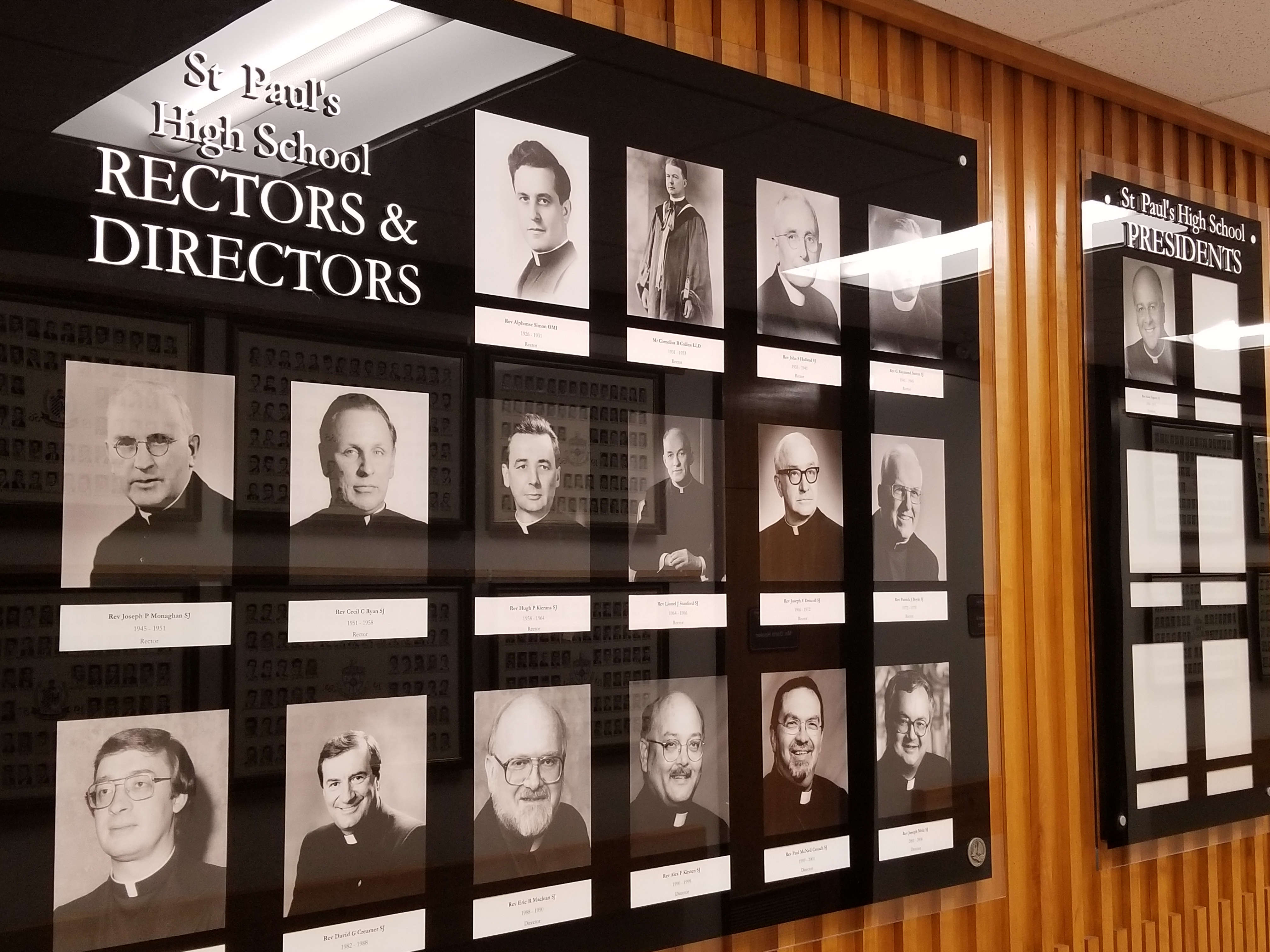The End of An Era

The conclusion of this academic year marks also the conclusion of an unbroken history of Jesuit leadership at St. Paul’s High School. Although the school originally opened in 1926, it wasn’t until 1933 that the Jesuits assumed responsibility for its operation. The first Jesuit Rector was Fr. John Holland (1933-1944). I will be the last (2013-2018).
This is a big deal. Understandably people in the school community are concerned that something significant is being lost, that the school faces unprecedented challenges, that the future is uncertain.
Not much that I can say will allay those concerns, although I am quick to point out that we are the last Jesuit school in Canada to move to a lay President, and that dozens of Jesuit schools in the United States made the change years ago. All of these schools are functioning very well as Jesuit schools under lay leadership. It’s not like we’re inventing something new.

Len Altilia, SJ. Source: St. Paul’s High School.
But it is a good moment to reflect on what makes a Jesuit school Jesuit. Documents abound that examine this concept. The Jesuit Secondary Education Association and its subsequent reincarnation as the Jesuit Schools Network have explored this at great length in the years since the transition to lay leadership in the schools first began.
So what, then, are the key characteristics of a Jesuit school, the sine qua non that ensures that a school can rightly be called Jesuit?
There is no easy answer to this question because much of it is intangible. But there is one thing that stands out clearly as the most basic and most essential quality. That is a conscious, deliberate, explicit and uncompromising commitment to the principles of Ignatian spirituality as the basis for all that happens in the school.
The dynamics of the Spiritual Exercises of St. Ignatius, the discernment of spirits, the commitment to cura personalis, finding God in all things, the Magis…. all of these and more must be part of the day-to-day life of the school across the spectrum of activities. Everything that the school does must find its justification and foundation in the Spiritual Exercises.
After that, you can start to look at the expressions of “Jesuit-ness” that have become strong elements of schools in North America and around the Jesuit world. One of the more popular expressions is called The Characteristics of the Grad at Grad, which set as the goal of Jesuit schools that their graduates should be loving, religious, open to growth, intellectually competent, and committed to justice.
Or the challenge issued by recent Superiors General that have said that our students should be people of compassion, competence, commitment, and conscience. Fr. Arturo Sosa, the current Superior General, added a fifth ‘C’ at the International Congress in Rio last October: consistency, by which he means basically practicing what we preach. Or perhaps you can look to that now famous statement of Fr. Pedro Arrupe back in the 1970’s that challenged our schools to form Men and Women for Others.
Further to that there are things like The Ignatian Pedagogical Paradigm and Our Way of Proceeding: Standards and Benchmarks which help schools stay on track and provide a framework within which to operate.
All of this goes to say that a school can function quite well as a Jesuit school without necessarily having a Jesuit at the helm. The responsibility for this resides not only with the President but equally importantly with the Board of Directors and with the faculty and staff. In my opinion it also resides to a significant degree with the alumni, students, and parents. There must be a commitment within the community in all its various constituents to maintain and further the Ignatian mission and identity of the school. The President, lay or Jesuit, is only one part of that, albeit a very important part.
It is critical that the Board be committed to Ignatian values and principles. The Board’s primary job is to hire a President who will exercise leadership according to those values and principles. Thus the Board has to be motivated, formed and guided by Ignatian spirituality not only in hiring the President and directing the President’s work, but also as it renews itself by bringing on new members. We talk about hiring and firing for mission when it comes to faculty and staff. The Board has to select for mission when it searches out new members, so that it can continue to fulfill its mandate of ensuring the Ignatian identity of the school.
The community of St. Paul’s has been working hard at all levels to prepare itself for this moment. Parent retreats, alumni Christian Service programs, Parents for Others volunteer opportunities, Kairos retreats for students, faculty mission and identity reflection periods, Board retreats, all have contributed to helping the community get ready to move forward under lay leadership. The moment has arrived. The community is ready. The school will continue in the Jesuit tradition without skipping a beat. Praise the Lord!




No Comments